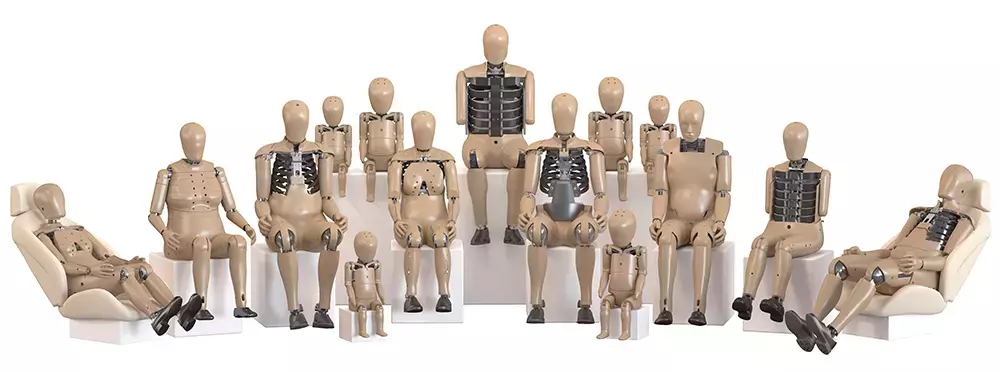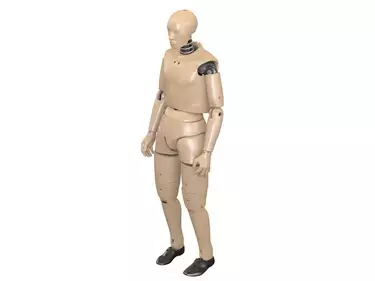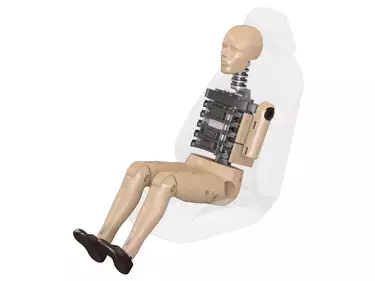
Humanetics created the first crash test dummy over 70 years ago.
An anthropomorphic test device (ATD) — commonly known as a crash test dummy — is a high-precision test instrument used to measure human injury potential in vehicle crashes.
Crash test dummies simulate human response to impacts, accelerations, deflections, forces and moments of inertia generated during a crash. Each dummy is designed to model the form, weight and articulation of a human body. Hundreds of sensors and transducers located within the dummy provide life-saving data to safety test engineers, measuring the precise physical forces exerted on each body part in a crash event.
We develop special sensors to measure the forces that break bones and cause soft-tissue injuries. These readings are controlled and repeatable, providing vehicle designers with reliable data to enhance and refine product safety. Thanks to our advanced engineering and meticulous manufacturing, Humanetics dummies are highly sophisticated platforms that deliver trusted sensory intelligence.
Crash test dummy responses can be correlated to risks of human injury through data modeling based on a variety of data sources. These include human physiological measurements in sub-injury, nonlethal crash simulations; crash simulations with PMHS (post-mortem human subjects); tests of physical properties of PMHS tissue; and other relevant tests.
Our range of crash test dummy models represent male, female and child anatomies. They are used by automotive manufacturers, safety and interiors suppliers, child car seat manufacturers, and regulators in every region of the world. They are used to protect soldiers from deadly weapons of war, to design better ejection seats for pilots, and to measure the effect of space travel on the human body. We offer dummies specifically designed to provide data for different vehicle types, occupant sitting positions and impact angles to meet the coming autonomous vehicle revolution.








